After 8 days of full-on excitement aboard the Galapagos Seaman Journey, we had mixed emotions about landfall yesterday. We spent the early morning hours saying our farewells to strangers that had become friends, exchanged emails to share photos and hoping to cross paths again in the future. A panga (dinghy) ride ashore followed by a short bus ride, we said our final goodbyes at the airport.
All but one duo were headed back to their respective countries, so we shared a taxi with them to Puerto Ayora. We spent the rest of the day booking dives for the week and attending to housekeeping items such as laundry and cluing up plans for our onward journey later in the week.
By 10 am the next morning we were already aboard a taxi and heading into the highlands of Santa Cruz with Benno and his mom, two Germans who we had spent the week with, steaming around Isabela Island.
Benno, named after the patron saint of Munich, is a 33 year old fire cracker! He travelled to Galapagos in his 20s and fell in love with the place. Based in Germany but still travelling the world, he now owns and runs a tour company specifically focused on Galápagos tours. His mother, Vicky, a university professor and author, was an absolutely beautiful human being; wise, knowledgeable, humble and worldly...I truly enjoyed her company!
We were headed to a family-run ranch about 30 minutes drive from the waterfront of Puerto Ayora. Located in the highlands; both humid and misty, we adorned the obligatory rubber boots and negotiated our way through slippery muddy paths to admire all that the ranch had to offer.
For several hours we hiked around the rim of a volcanic crater eventually finding our way down and into its lush cavern. Along marked pathways, we wandered past endemic plants of all shapes, sizes and colours; set against broad green leaves dotted with dew, the images were breathtaking.
We picked soft, sweet bananas and enjoyed their deliciousness as we stood in awe of the canopy that shaded us from the late morning sun. Dwarfed against the enormity of the banana leaves hovering above our heads, we munched away, happy as clams, in silence.
Later we found fresh tree tomatoes, a fruit I didn’t know existed until coming to Galapagos. Popular throughout South America and sold internationally as a ‘tamerillo’, the plant is a small, half-woody, attractive, fast-growing, brittle tree. The leaves are musky in odour and the fruit is smooth and egg-shaped but pointed at both ends. Apparently the skin colour may range from deep-purple, blood-red, orange or yellow but the flesh is a creamy orange colour and wonderfully juicy!
Being able to freely pick and enjoy the wild fruits added to the beauty of our experience. At the base of a staircase aptly named ‘Stairway to Heaven’ we stumbled upon a wild cherry tomato plant and we each popped one in our mouths. The explosive flavour left us salivating as we ascended the staircase.
The gem of the entire visit was finding the entrance to a small lava tunnel. These impressive underground tunnels are found on the outskirts of several villages throughout the Galápagos Islands.
Lava tunnels are created when the outside skin of a molten-lava flow solidifies. When the lava flow ceased, the molten lava inside the flow kept going, emptying out of the solidified skin and thus leaving tunnels.
With the entrance not much bigger than the top of a 40 gallon drum, we each wormed our way down the narrow hole, some 3 or 4 meters deep. Once at the bottom you walked into a small narrow chamber and into complete and almost immediate darkness.
Never in my life before have I experienced this level of blackness. There was absolutely no difference in having your eyes opened or closed; the effect was the same, an abyss of black. I raised my hand and moved it in front of my eyes to see if I could detect the outline of its movement; nothing.
After a few minutes of amazement, a hint of anxiety started to take over and I was compelled to turn on my headlamp and move forward!Hunched over on all fours, we crab-walked along a smaller chamber that led toward the light! The exit was narrower still, and I only just managed to shimmy up its length with my daypack on. Muck everywhere, I crawled out into the light feeling like I was just spit out of the womb!
Just when we thought the best of the day was over, we stumbled upon a farmer milling sugar cane into juice. The man hand-fed the mill long stalks of cane that was pressed by a churn. The churn had an arm that was turned by a donkey who was harnessed to the entire outfit. As the donkey walked around the corral, the press squeezed out a murky brown juice.
The farmer transferred the juice to bamboo cups and squeezed a large, fresh, orange lemon (yes, an orange lemon!) into the sugarcane juice! OMG! Delicious! I’m not sure how sanitary the whole affair was but my God, what a rustic, culinary treat! To boot, the donkey has his own cup and gets to drink what visitors don’t ? The crescendo to the day was watching the donkey drink from his cup! Too funny! He clearly enjoyed the drink and I couldn’t help but wonder if he had more cavities than the average donkey!!
With nothing left but to head back to town, we washed the mud off our boots, called a taxi and headed to the Charles Darwin Research Station.
Located in Puerto Ayora and about a 15 minute walk from the waterfront, this iconic national-park site, boasts over 200 scientists and volunteers who are involved with research and conservation efforts. The most well known project, involves a captive breeding program for giant tortoises. There's also a baby-tortoise house with incubators and when the tortoises weigh about 1.5 kg or are about four years old, they are returned to their homes in the wild.
We had all observed giant tortoises in the wild since coming to the Galapagos so the real thrill here was seeing the efforts of the scientists in helping maintain the Giant Tortoise population; seeing the baby tortoises was icing on the cake!
Nearby, in a climate controlled building we met Lonesome George; the last of his breed, the Pinta Giant Tortoises.
George was found in 1971 when all other male Pintas were thought to have expired.
He was captured and corralled with female counterparts though he never reproduced. It is believed because he spent so much time in insolation that he had never learned to be “friendly” with the ladies. So, despite science’s best efforts, a childless George passed away on June 12, 2012 and with him, the fate of his breed.
Ironically on both accounts, George is the national icon of hope and here in his climate controlled room, stands proud, though I have no idea why!
After a rather full day, we sat back over an early supper, enjoyed a few cold beers and fresh local seafood with Benno and his mom. We chatted for hours about business, eco-travel and where the road leads next for each of us. Benno and Vicky shared their own experiences with South America and suggested a variety of places for us to visit and recommend a couple of ports of entry into the Amazon.
Buzzing with excitement and perhaps a little high on sensory overload, we bade our friends a final farewell and headed home for an early night. With new travel possibilities floating around in our heads, we spent some time researching and eventually booking an onward flight before finally hitting the sack!A few more days bouncing around the islands and then we are mainland Ecuador bound! Whoot! Whoot!

 Parque Nacional Galápagos, Galápagos Islands, Ecuador
Parque Nacional Galápagos, Galápagos Islands, Ecuador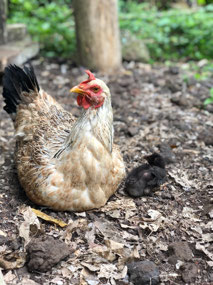
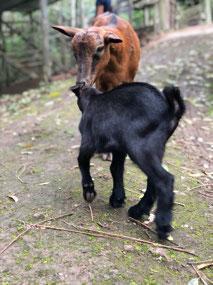
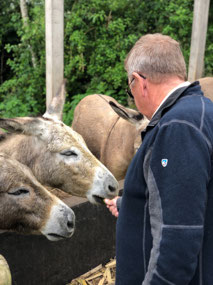
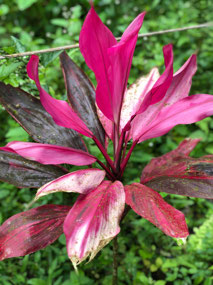
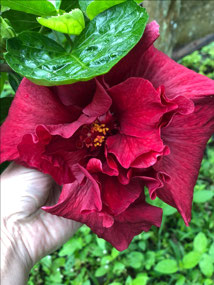





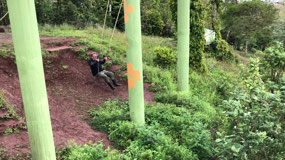


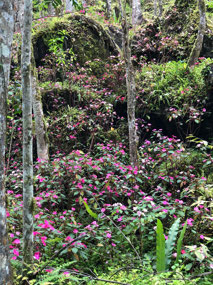
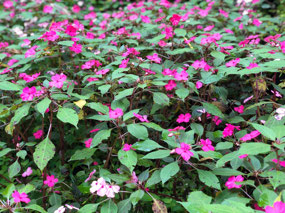
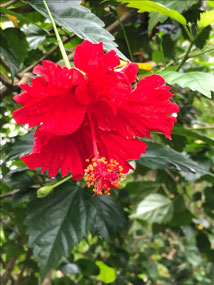
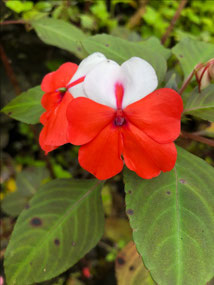
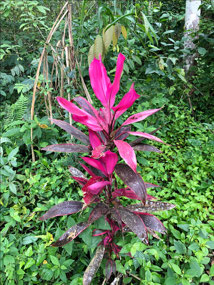
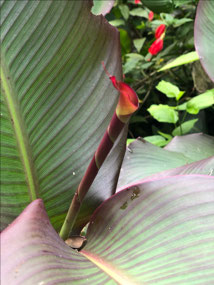
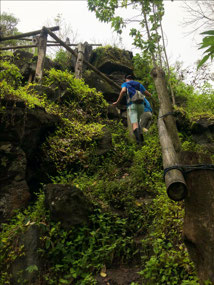


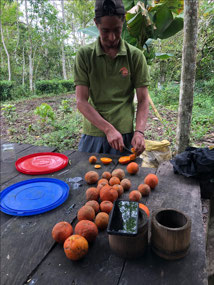
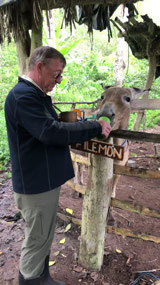
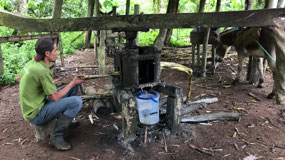
Lee Anne
2019-11-20
Love all the photos! Simply breathtaking! ❤
AuntMadeline
2019-11-21
Lovely as usually. Am I ŕight...today is November 21..It's your birthday Dina! What better place to celebrate..Happy Birthday to you. Cheers.
Linda
2019-11-23
Beautiful pictures
Jenny
2019-11-24
Dina, your pictures are beautiful. So happy you and Paul are having such a wonderful adventure. Stay safe.